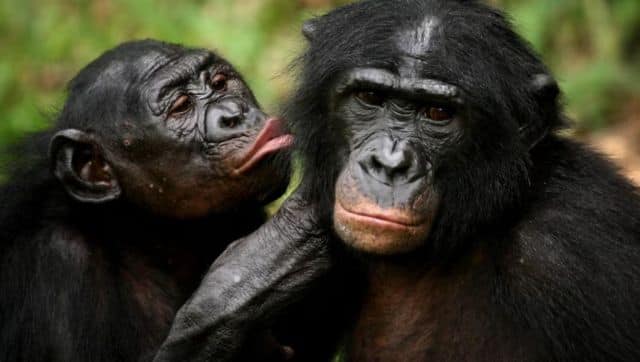We tend to think of kissing as something deeply human, maybe even something that arrived with romance or early civilisations. But scientists now say its roots go much, much further back.
A new study suggests that kissing may have started around 21 million years ago, in the common ancestor we share with other great apes, long before modern humans, Neanderthals, or anything close to us existed.
Published in Evolution and Human Behavior, the research is the first attempt to map how kissing evolved across primates, and the findings suggest this familiar gesture is far older than we ever imagined.
Here’s what scientists are discovering about how the kiss truly began.
From apes to us: The very first kiss
For a long time, the earliest evidence of kissing came from ancient Mesopotamia and Egypt, where written records show people locking lips at least 4500 years ago. And since only about 46 per cent of human societies document romantic kissing, many scientists believed it might be a cultural practice that emerged relatively late.
But newer research suggests the behaviour goes much further back, possibly millions of years. Chimpanzees, bonobos, and orangutans have all been observed kissing, and there are clues that Neanderthals also did it. One study found that early Homo sapiens and Neanderthals shared the same oral bacteria, hinting at close mouth contact.
“That means that they must have been swapping saliva for hundreds of thousands of years after the two species split,” explained Dr Matilda Brindle of the University of Oxford to NewsScientist.
 Primates including bonobo apes are known to kiss one another; the behaviour may have its origins deep in humans’ evolutionary past. File image/Reuters
Primates including bonobo apes are known to kiss one another; the behaviour may have its origins deep in humans’ evolutionary past. File image/Reuters
Brindle and her colleagues decided to investigate how far back kissing really goes. “Kissing seems a bit of an evolutionary paradox,” she says. “It probably doesn’t aid survival and could even be risky in terms of helping pathogen transmission.”
To compare behaviours across species, the team created a simple definition of kissing: friendly mouth-to-mouth contact with lip movement, without the exchange of food. Using this lens, they found surprising examples of “kissing” not just in primates, but in animals like wolves, prairie dogs, polar bears, and even albatrosses.
Their deeper analysis of apes helped map the behaviour’s evolutionary path. The findings suggest that the roots of kissing stretch back to a common ancestor shared by humans and great apes around 21 million years ago, far older than any human civilisation.
Also read: Can kissing spread depression and anxiety?
But why did kissing happen?
There isn’t enough data yet to tell why kissing evolved, said Brindle, but she does suggest two hypotheses.
“In terms of sexual kissing, it could enhance reproductive success by letting animals assess mate quality. If someone has bad breath, then you can choose not to reproduce with them,” she told News Scientist.
Sexual kissing could also help with post-copulation success by promoting arousal, she said, which can speed up ejaculation and change the vaginal pH to make it more hospitable to sperm.
The other main idea is that non-sexual kissing developed from grooming and is useful for strengthening bonding and mitigating social tension. “Chimpanzees will literally kiss and make up after a fight,” said Brindle.
“I think from the evidence that they have, kissing definitely has this affiliative function,” said Zanna Clay at Durham University, UK, told Newsweek. “We know, for example, in chimps that it does seem to form this important role in repairing social relationships. But to me, the sexual aspect is a little bit of a question mark.”
As to the issue of whether kissing is an evolved behaviour or a cultural invention, “I think our results show very clearly that kissing has evolved,” said Brindle.
With input from agencies
)